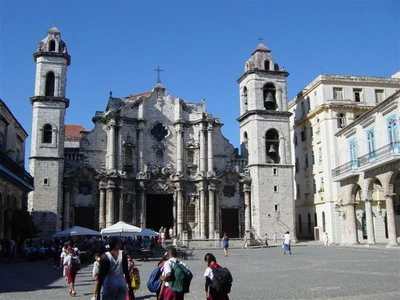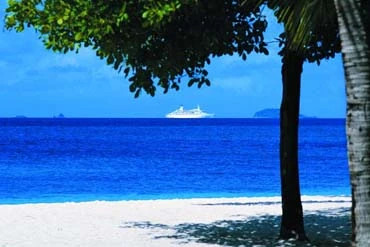
|
This article is a stub! This article doesn't contain enough information. If you know anything about About Caribbean Islands, please add to this article!
|
Caribbean Islands – Culture, Food & Diets[]
The Caribbean Islands have been a “meeting ground” for several civilizations throughout history. They are still being referred to as “the Crossroad between the two Americas”. Cultural plurality and the mixing of different civilizations gave the Caribbean Islands’ uniqueness and formed their own cultural identity.
The Caribbean Islands are a series of land patches located between the two Americas. They contain states or provinces like Jamaica, The Dominican Republic, Trinidad & Tobago, Cuba, Puerto Rico, Surinam or Haiti. Each of these islands live under the cultural influence of the different countries that colonized them. For example Jamaica and Trinidad & Tobago are influenced by British culture, Puerto Rico, The Dominican Republic and Cuba are influenced by the Spanish culture and so forth. Almost all of these islands have a large number of African habitants, Africans brought here as slaves during the colonization era.
A great asset of the Caribbean culture is the ability to constantly grow and popularize ideologists and scholars. People like Paul Bogle, Henry Sylvester, Marcus Garvey, CLR James, Sir Arthur Lewis, Louise Bennett, Derek Walcott or Bob Marley, impressed and marked the World through their art, with their free spirit, ideologies and way of taught.
Apart from the famous pirate stories, inhabitants of the Caribbean Islands have a tradition in sailing and “living off the sea”. Entire towns and colonies live out of fishing and shrimp commercialization. Fishing and sailing have become traditions, elements of the Caribbean culture.
If we were to generalize the cuisine of all islands in the Caribbean chain, we could say that it’s the mélange of three or four different cuisines: French, British, Spanish and recently the USA cuisine. All of these cultures, as well as their respective culinary traditions, have played a role in forming the multi-national cuisine of the Caribbean.
When Columbus introduced sugarcane to the inhabitants of the Caribbean Islands in 1493, little did he know that they will find a way to make a sweet beverage that is internationally renowned and acclaimed: the rum. The rum has blended in the Caribbean culture, being a culinary symbol of the islands.
Each region of the islands inherited important elements of the cuisine of the colonizing power. For example Puerto Rican and Cuban cuisine have distinct Spanish-based dishes, Guadeloupe and Martinique have a French-influenced cookbook and Jamaica, as a massive slave-trading center, has strong African influences, as well as British touches to its cuisine.
To summarize each region’s food habits, I will provide a few distinct dishes of some of the islands:
Cuba:
- Sopa de Frijoles
- Quimbombo Roast Pork and okra Stew with plantain
- Barbara 's Bunuelos - cassava Fritters with Sweet lime Syrup
Dominican Republic:
- plantain Soup
- Roasted breadfruit
- Conky - Spiced cassava Cooked in banana Leaves
Guadeloupe:
- Crabs Farcis
- Seasoned breadfruit and Vegetable Stew with Pork and Dumplings
- Gateau avec citron et mango
Jamaica:
- Pepperpot Soup;
- One Can - One-Pot Vegetable Jambalaya
- Dokono - cornmeal Dumplings Cooked in banana Leaves
- “Yeah, Man” - Jamaican Milkshake
- Piña Colada.
Trinidad and Tobago:
- Smoked Herring with coconut Bread
- roucou Shrimp and ginger Wine Sauce
- Callallo - Spicy soup of green leaves from the dasheen plant
Conclusion[]
The key words to describing the Caribbean Islands are: diversity, cultural crossroad and blending of races. “Diversity” because they took elements of several cultures and civilizations, “cultural crossroad“ because they have been a meeting and fighting ground for the European powers during the colonization era and they are currently a cultural meeting place of the two Americas and “blending of races” because the population in the Caribbean Islands share good percents of French, Spaniards, British, Africans, North and South Americans and indigenous peoples alike. They are truly a center point of modern globalization.
More about Caribbean Culture[]
Other Regional Links:


